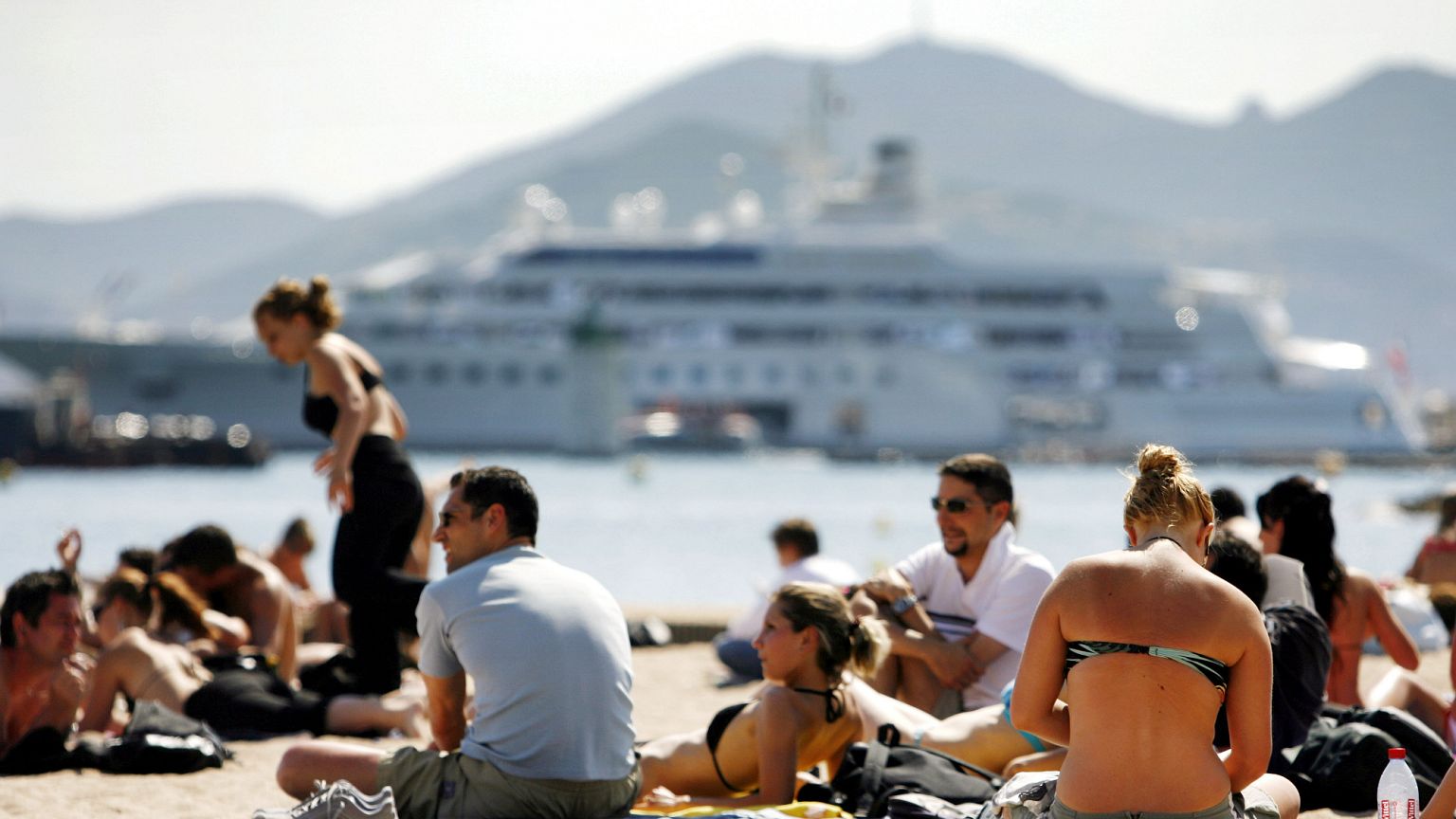Spain Takes The Lead in Europe’s Sustainable Tourism Sector for 2025 – Travel And Tour World

Report on Spain’s Sustainable Tourism Leadership in 2025
This report outlines Spain’s position as a leading destination for sustainable tourism in 2025, based on findings from the Turespaña Market Studies 2025. The analysis highlights the nation’s strategic alignment with the United Nations Sustainable Development Goals (SDGs) through its focus on environmental responsibility, cultural preservation, and inclusive economic growth.
Alignment with Sustainable Development Goals (SDGs)
Spain’s tourism strategy demonstrates a strong commitment to the 2030 Agenda for Sustainable Development. The nation’s approach integrates multiple SDGs into its core tourism model, establishing a framework for responsible and resilient growth.
SDG 8: Decent Work and Economic Growth
The tourism sector’s positive trajectory, marked by increased tourist spending and trip frequency from 42 global markets, directly contributes to sustainable economic growth. By promoting year-round travel and developing lesser-known regions, Spain fosters stable employment and ensures economic benefits are distributed more equitably across the country.
SDG 11: Sustainable Cities and Communities
Spain is actively working to make its cities and settlements inclusive, safe, and resilient by:
- Preserving cultural and natural heritage as a primary attraction.
- Maintaining a reputation for safety and stability, which enhances visitor experience and community well-being.
- Promoting tourism dispersal to regions like Andalusia and Castilla y León to mitigate overtourism and support local economies.
SDG 12: Responsible Consumption and Production
The national strategy addresses the global shift away from mass tourism by championing sustainable consumption and production patterns. This is achieved by promoting authentic, eco-conscious experiences and encouraging “slow travel,” which emphasizes meaningful engagement with local communities and minimizes environmental impact.
SDG 13, 14 & 15: Climate Action, Life Below Water, and Life on Land
Spain acknowledges the challenges of climate change and is implementing measures to protect its natural ecosystems. Key initiatives include:
- Developing eco-conscious cultural routes that prioritize environmental preservation.
- Promoting rural and nature-based tourism in diverse landscapes, from the Basque Country to the Costa Brava, fostering an appreciation for biodiversity.
Strategic Initiatives and Growth Sectors
In response to evolving global travel behaviors, Spain has diversified its tourism offerings to align with demands for authenticity, sustainability, and cultural depth.
Key Growth Areas Supporting Sustainability
- Rural and Nature-Based Tourism: Leveraging diverse geography to offer retreats that support local ecosystems and communities, contributing to SDG 15 (Life on Land).
- Language-Learning and Cultural Immersion: Positioning Spain as a premier destination for immersive educational experiences, supporting SDG 4 (Quality Education) and SDG 11.
- Sport and Wellness Tourism: Establishing a hub for physical and mental rejuvenation through activities like hiking, cycling, and wellness retreats, aligning with SDG 3 (Good Health and Well-being).
- Eco-Conscious Itineraries: Developing travel routes focused on sustainable practices and heritage preservation, directly supporting SDG 12.
Infrastructure and Market Accessibility
Enhanced Connectivity and Strategic Dispersal
Improved air connectivity with European and long-haul markets has increased accessibility. Concurrently, Spain is promoting a shift towards year-round travel. This strategy helps manage visitor flows, reduces the strain on infrastructure during peak seasons, and supports more consistent economic activity in line with SDG 8.
Challenges and Mitigation Strategies
Spain faces industry-wide challenges, including rising travel costs, inflation, and the environmental impacts of climate change. The nation is addressing these issues by enhancing public awareness and promoting responsible tourism practices.
Opportunities for Sustainable Growth
- Slow Travel: Encouraging a slower pace of exploration that fosters deeper connections with local culture and reduces the carbon footprint of travel.
- Digital Nomadism: Capitalizing on the trend of remote work by offering attractive long-stay options in both urban and rural settings.
- Alternative Destinations: Actively promoting less-frequented regions to distribute tourism’s economic and social benefits more widely.
Conclusion: A Model for a Sustainable Future
Spain’s 2025 tourism strategy solidifies its role as a global leader in sustainability. By integrating the Sustainable Development Goals into its policies, the country effectively balances economic growth with environmental and social responsibility. Its commitment to preserving cultural heritage, protecting natural landscapes, and promoting authentic experiences provides a robust model for the future of global tourism.
Relevant Sustainable Development Goals (SDGs)
-
SDG 8: Decent Work and Economic Growth
The article extensively discusses the economic aspects of Spain’s tourism sector. It highlights “consistent growth in tourist trip frequencies, tourist spending, and airlift capacity,” which directly contributes to the country’s economic growth. The focus on developing year-round travel and diversifying tourism into new sectors like wellness, language-learning, and rural tourism aims to create more stable and sustainable employment opportunities, aligning with the goal of promoting sustained, inclusive, and sustainable economic growth.
-
SDG 11: Sustainable Cities and Communities
This goal is addressed through Spain’s efforts to protect its cultural and natural heritage. The article emphasizes the importance of “cultural heritage,” “local heritage preservation,” and developing “eco-conscious cultural routes.” Furthermore, by promoting “lesser-known destinations” and “slow travel,” Spain is actively working to manage tourism flows, prevent “overtourism” in major hubs, and make its communities more sustainable and resilient.
-
SDG 12: Responsible Consumption and Production
The central theme of the article is Spain’s shift towards “sustainable tourism,” which is a core component of SDG 12. The text notes that travelers now value “sustainability, cultural depth, and safety—over mass tourism experiences.” Spain’s response, by promoting “responsible tourism practices,” “eco-conscious experiences,” and “slow travel,” demonstrates a commitment to ensuring sustainable consumption and production patterns within its largest service industry.
-
SDG 13: Climate Action
The article explicitly identifies “climate change” as a significant challenge impacting the tourism sector. Spain’s strategy to tackle this includes “promoting responsible tourism practices,” enhancing “public awareness of sustainability,” and a general focus on “environmental conservation.” These actions represent adaptive measures to combat the impacts of climate change on the industry and the environment.
-
SDG 15: Life on Land
This SDG is relevant through the article’s focus on “Rural and Nature-Based Tourism.” By promoting its “diverse landscapes—from the lush green hills of the Basque Country to the sun-kissed coastlines of Costa Brava,” Spain is leveraging its natural ecosystems for tourism. The underlying principle, supported by mentions of “environmental conservation,” is the sustainable use of these terrestrial ecosystems, which is crucial for their long-term protection.
Specific SDG Targets
-
Target 8.9: Promote sustainable tourism
The article directly supports this target by describing how Spain is implementing policies to promote sustainable tourism. It details the growth of sectors like “Rural and Nature-Based Tourism” and “Eco-Conscious Cultural Routes,” which create jobs and promote local culture and products, as mentioned in the target’s text: “devise and implement policies to promote sustainable tourism that creates jobs and promotes local culture and products.”
-
Target 11.4: Protect the world’s cultural and natural heritage
This target is clearly identified through the article’s repeated references to Spain’s commitment to its “cultural repository,” “cultural heritage,” and “local heritage preservation.” The promotion of travel to experience “stunning natural landscapes” and “historical sites” while practicing “environmental conservation” aligns with the goal of strengthening efforts to protect and safeguard heritage.
-
Target 12.b: Develop and implement tools to monitor sustainable tourism impacts
The entire article is based on the findings of the “Turespaña Market Studies 2025,” which serves as a tool to monitor tourism trends and impacts. This official report analyzes shifts in traveler behavior towards sustainability and informs Spain’s strategy. This directly relates to the target of developing tools to monitor the impacts of sustainable tourism.
-
Target 13.3: Improve education and awareness-raising on climate change
The article states that Spain is “enhancing public awareness of sustainability” as a response to challenges like climate change. This action directly corresponds to the target of improving education and awareness-raising to build capacity for climate change mitigation and adaptation.
Implied Indicators for Measuring Progress
-
Economic and Tourism Metrics
The article mentions several quantitative indicators used to measure the success of the tourism sector, including “tourist trip frequencies,” “tourist spending,” and “airlift capacity.” These can be used to track progress towards the economic goals of Target 8.9.
-
Diversification of Tourism Offerings
The development and growth of specific tourism sectors serve as an indicator of a shift towards sustainability. The article names several, such as “Rural and Nature-Based Tourism,” “Language-Learning Travel,” “Sport and Wellness Tourism,” and “Eco-Conscious Cultural Routes.” Tracking the number of visitors or revenue from these sectors indicates progress.
-
Shift in Visitor Patterns
An indicator of more sustainable tourism is the “growing trend toward year-round travel” and visiting during the “off-season.” This helps distribute the economic benefits and environmental pressures more evenly. The article also points to the promotion of “lesser-known destinations,” and tracking visitor numbers in these areas versus traditional hotspots would be a key indicator of success in combating overtourism (Target 11.4).
-
Monitoring and Reporting
The existence and publication of the “Turespaña Market Studies” report is itself an indicator that Spain is actively monitoring sustainable development impacts, as called for in Target 12.b.
SDGs, Targets, and Indicators Analysis
| SDGs | Targets | Indicators |
|---|---|---|
| SDG 8: Decent Work and Economic Growth | Target 8.9: By 2030, devise and implement policies to promote sustainable tourism that creates jobs and promotes local culture and products. |
|
| SDG 11: Sustainable Cities and Communities | Target 11.4: Strengthen efforts to protect and safeguard the world’s cultural and natural heritage. |
|
| SDG 12: Responsible Consumption and Production | Target 12.b: Develop and implement tools to monitor sustainable development impacts for sustainable tourism. |
|
| SDG 13: Climate Action | Target 13.3: Improve education, awareness-raising and human and institutional capacity on climate change mitigation. |
|
| SDG 15: Life on Land | Target 15.1: Ensure the conservation, restoration and sustainable use of terrestrial and inland freshwater ecosystems. |
|
Source: travelandtourworld.com

What is Your Reaction?
 Like
0
Like
0
 Dislike
0
Dislike
0
 Love
0
Love
0
 Funny
0
Funny
0
 Angry
0
Angry
0
 Sad
0
Sad
0
 Wow
0
Wow
0












































































